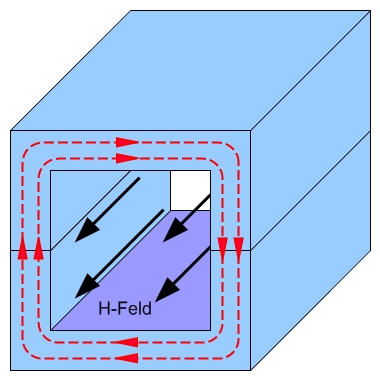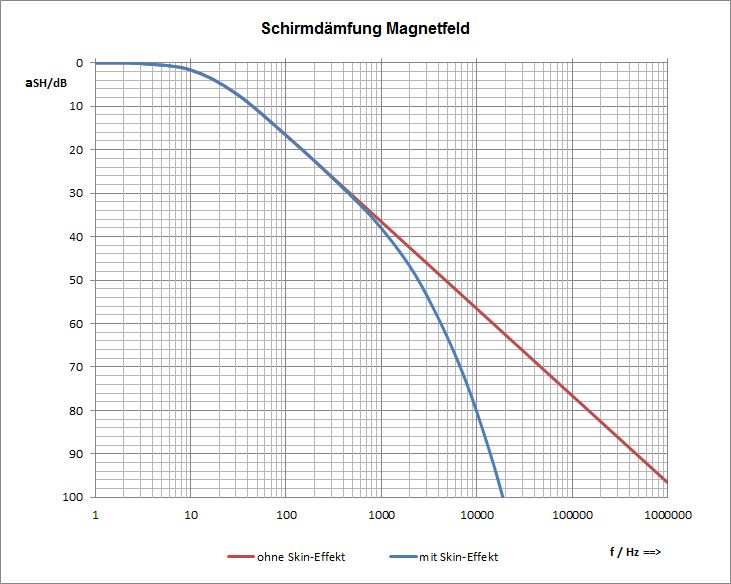
Eddy Currents
Shielding
Shielding Principle
The shielding principle against alternating magnetic fields is based on the generation of Eddy Currents
When a magnetic field (= H field) attempts to penetrate an electrically conductive, closed shielding, it induces Eddy Eurrents in the shielding material. These Eddy Currents, in turn, generate a secondary magnetic field that opposes the primary, penetrating magnetic field.
When the shielding is closed on all sides, the eddy currents can flow unimpeded in any direction - shielding magnetic fields from any direction. Conversely, if openings or slots force the eddy currents to detour or even completely break the current path, then the effect of the shielding is limited or even completely eliminated.
The better the conductivity of the shield, the less it impedes the flow of Eddy Currents - and the better they can cancel out the magnetic field inside the shield.
In the case of an ideal conductive screen, the secondary magnetic field generated by the eddy currents becomes exactly the same in opposite as the primary, exciting magnetic field ==> both magnetic fields are completely cancelling each other, the inside of the shield is field-free.
Shield attenuation is the same from outside to inside and from inside to outside - if the same measuring arrangement is used.
The Eddy Current Principle does not work against Static Magnetic Fields - if nothing changes, no Eddy Current is induced - unless the conductivity is infinite, or the resistance = 0 (as with supra-conductors). Then the intrusion of static magnetic fields is prevented (which also represents a, albeit very slow, magnetic field change).

Shielding attenuation against homogeneous magnetic field for a case made of 5 mm AlMgSi (100 x 300 x 300)
The diagram shows the course of the shield attenuation from 1 Hz to 1 MHz
(without consideration of contact resistance between housing parts)
Without a skin effect (red curve), the attenuation would increase 20 dB per decade as the frequency increases.
Due to the skin effect, which starts at about 500 Hz for this configuration, an increasing attenuation results with increasing the frequency(blue curve). The same effect that drives high-frequency current to the outside of conductors - and thus often the developer of HF transformers to despair - comes to us here as a welcome help to increase the attenuation. Since it is not necessarily that clear, how the currents reduced on the inside, help to compensate the magnetic fields, one can alternatively imagine the effect as an apparent increase in wall thickness - and thus an analog apparent increase in conductivity, which correspondingly increases the attenuation. (If you enter this apparent wall thickness into the calculation without skin effect, you get the same value for the respective frequency as with the original wall thickness with skin effect.)
Conversely, the attenuation decreases steadily with decreasing frequency - until complete inefficiency. Against very low frequency magnetic fields, the effect of the aluminum screen is severely limited, against magnetic DC field, it is without any effect.
Approximately the shielding attenuation can be calculated according to the following formula:

with
A as the area enclosed by the shielding
l as the path length of the eddy current path
µ as µ0 • µr
µ0 as magnetic field constant µ0 = 4 π • 10^-7 N/A²
µr as relative permeability
ω as 2 π f f as frequency in Hz
j as √ -1
Z_kges as the complex total resistance of the eddy current path
© Ingenieurbüro Lindenberger 8447

